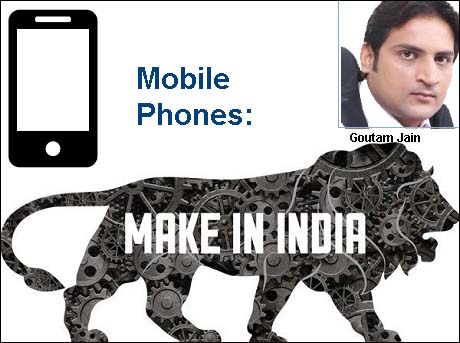
What are the challenges and industry demands for the indigenous manufacture of mobile phones?
Goutam Jain, Co- Founder, M-tech Informatics, lays out the issues
July 25 2018: The year 2018 saw India mainrtain its position as the fastest growing smartphone market in the world with double digit growth as per a IDC report. However, the industry is plagued by many issues and a lot still needs to be done if India were to emerge as a mobile phone manufacturing hub.
First, on the policy front, an issue that needs immediate attention by the government is the misuse of Free Trade Area (FTA) within ASEAN countries in the form of duty evasion by some players, who are importing Completely Built-Up Units (CBUs) at zero customs duty. This will adversely impact both the government and domestic brands in terms of revenue loss and unfair pricing, respectively.
Second, the budget 2018 hiked the import duty on critical phone components like PCB’s, camera, sensors, etc to 10 pc from zero pc. However, most manufacturers still need to import these components due to the absence of a domestic component manufacturing eco- system. This has already led to spike in prices of mobile phones which has to be absorbed by the manufacturers, further eroding margins. Additionally, though the move by government to hike import duty on CBU’s to 20 % is well intentioned, the fact that currently about 80 %-90 % components are taxed [which were earlier nil], make the pricing differential between CBU’s and domestic manufactured phones negligible, thereby rendering the budget move ineffective. Therefore, the government needs to roll back the hike on components and further hike import duty on CBU’s to discourage imports and boost domestic production.
Third, a recent development that has adversely affected the industry is the steep three fold rise in BIS [ Bureau of Indian Standards] fee for testing and compliance, without any valid reason. This is not including other tests like BIS language testing, SAR and ROHS which all put together dent manufacturer margins. We urge the government to come up with a slab based formula and categorize manufacturers as per sales volume or value, which we feel is a fairer way to assess small, medium and large players and provide a level playing field.
India is set to emerge as the largest mobile manufacturer in the world in the next few years. From 2 manufacturing units in 2014 to 120 currently , the size of the domestic mobile manufacturing industry was Rs 940 billion ( 94,000 crores) in FY 2016-17 , employing over 1,50,000 direct workers and contributing 1.75 percent to India’s GDP, thereby generating large revenues for government through indirect and direct taxes. On a concluding note, I would like to add that with a potential to generate 8 lakh jobs and contribute 8 pc to the GDP by 2020, the industry requires all possible support from the government to accelerate the momentum which leads to mass employment generation and success of the Make in India programme.